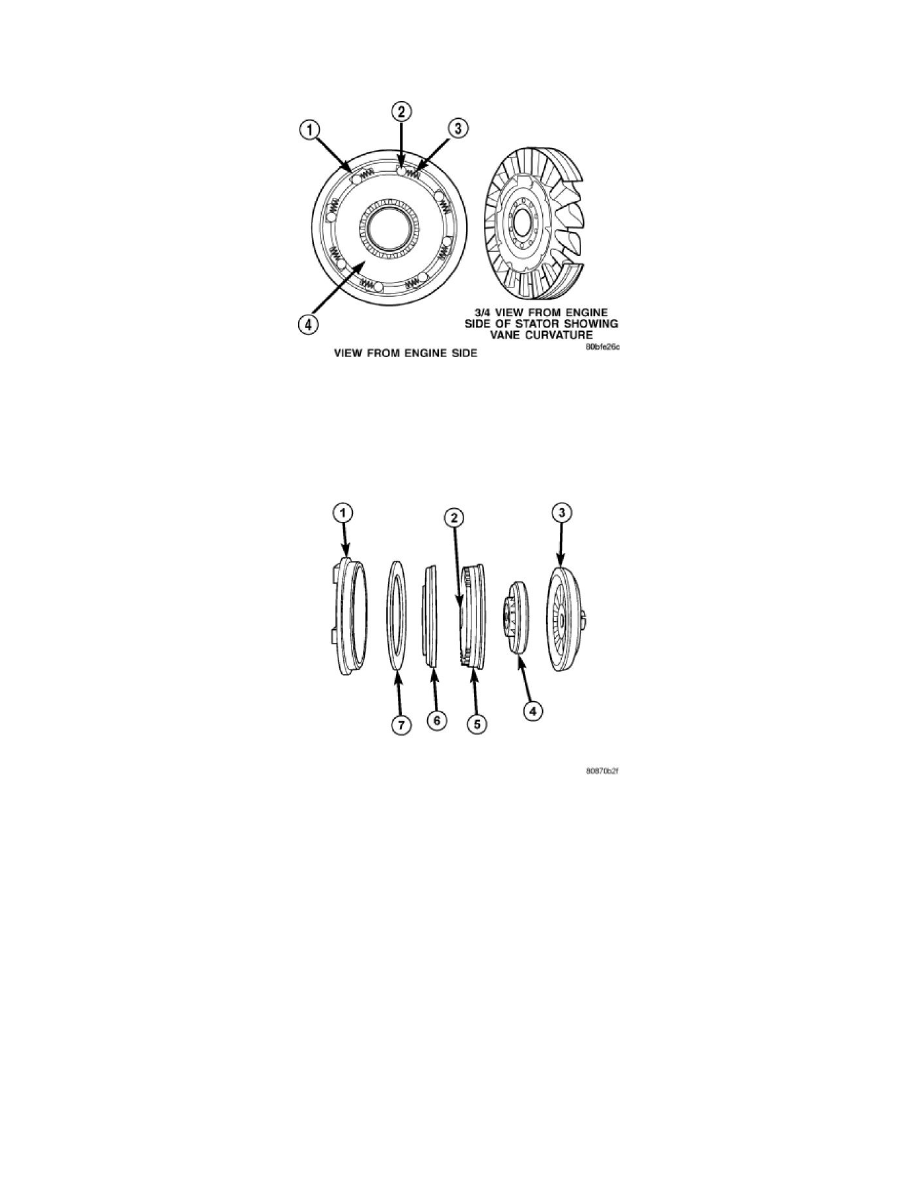RAM 1500 Truck 4WD V8-4.7L (2008)

The stator assembly is mounted on a stationary shaft which is an integral part of the oil pump. The stator (1) is located between the impeller (2) and the
turbine (4) within the torque converter case.
The stator contains an over-running clutch (1-4), which allows the stator to rotate only in a clockwise direction. When the stator is locked against the
over-running clutch, the torque multiplication feature of the torque converter is operational.
TORQUE CONVERTER CLUTCH (TCC)
The TCC was installed to improve the efficiency of the torque converter that is lost to the slippage of the fluid coupling. Although the fluid coupling
provides smooth, shock-free power transfer, it is natural for all fluid couplings to slip. If the impeller (3) and turbine (5) were mechanically locked
together, a zero slippage condition could be obtained. A hydraulic piston (6) with friction material (7) was added to the turbine assembly (5) to provide
this mechanical lock-up.
In order to reduce heat build-up in the transmission and buffer the powertrain against torsional vibrations, the TCM can duty cycle the L/R-CC Solenoid
to achieve a smooth application of the torque converter clutch. This function, referred to as Electronically Modulated Converter Clutch (EMCC) can
occur at various times depending on the following variables:
-
Shift lever position
-
Current gear range
-
Transmission fluid temperature
-
Engine coolant temperature
-
Input speed
-
Throttle angle
-
Engine speed
Operation
OPERATION
